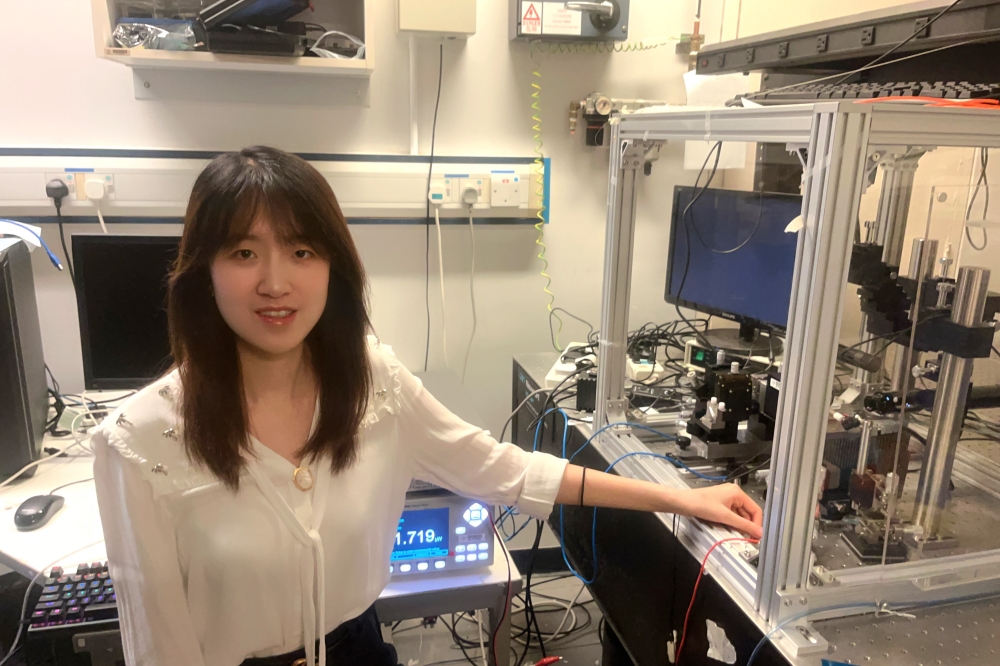New technique enables efficient integration of III-V with silicon

The method involves selectively growing III-V materials on silicon-on-insulator laterally, without thick buffers
Researchers at the Hong Kong University of Science and Technology (HKUST) have developed a new integration technique for efficient integration of III-V compound semiconductor devices and silicon. The scientists say this method paves the way for photonic integration at low cost, large volume, and high speed and throughput, potentially revolutionising data communications. The findings are reported in the journal Laser & Photonics Reviews.
Unlike conventional integrated circuits, or microchips, that use electrons, photonic integrated circuits use photons, or particles of light. Photonic integration combines light and electronics to speed up data transfer. Silicon photonics, in particular, is at the forefront of this revolution as it enables the creation of high-speed, low-cost connections that can handle massive amounts of data at once.
While silicon can handle passive optical functions, it struggles with active tasks, such as generating light (lasers) or detecting it (photodetectors) – both key components for data generation and readout. This necessitates the integration of III-V semiconductor materials (which use elements from groups III and V of the periodic table) onto a silicon substrate for complete functionality and enhanced efficiency.
However, while III-V semiconductors do the active tasks well, they do not naturally work well with silicon. The team, led by Xue Ying, research assistant professor, and Lau Kei-May, research professor from the Division of Emerging Interdisciplinary Areas (EMIA), tackled this challenge by finding a way to make III-V devices work efficiently with silicon.
They developed a technique called lateral aspect ratio trapping (LART) – a novel selective direct epitaxy method that can selectively grow III-V materials on silicon-on-insulator (SOI) in a lateral direction without the need for thick buffers.
While no integration methods reported in the previous literature could solve the challenge with high coupling efficiency and high production volume, their method achieved an in-plane III-V laser, so that the III-V laser can couple with silicon in the same plane, making it efficient.
“Our approach addressed the mismatch of III-V devices and silicon,” said Xue. “It achieved excellent performance of III-V devices and made it easy and efficient to couple III-V with silicon.”
In the past decades, data traffic has grown exponentially, driven by emerging technologies such as big data, cloud applications, and sensors. The field of integrated circuits, also known as microelectronics, has enabled that growth by making electronic devices smaller and faster thanks to Moore’s Law, an observation that the number of transistors on a microchip doubles about every two years. But the continued explosion of data traffic has pushed traditional electronic devices to their limits.
The start of the Zettabyte Era in 2016 ushered in soaring growth in data generation, processing, transmission, storage, and readout. This surge poses critical challenges of speed, bandwidth, cost, and power consumption. This is where photonic integration, in particular silicon photonics, comes in.
In the next steps, the team plans to show that III-V lasers integrated with silicon waveguides can perform well, with a low threshold, high output power, long lifetime, and the ability to operate at high temperatures.
Xue added that there are key scientific challenges to address before the new technique can be used in everyday technologies. However, the scientists say it will enable new-generation communications and various emerging applications and research areas, including supercomputers, artificial intelligence (AI), biomedicine, automotive applications, and neural and quantum networks.
Image credit: Hong Kong University of Science and Technology



































